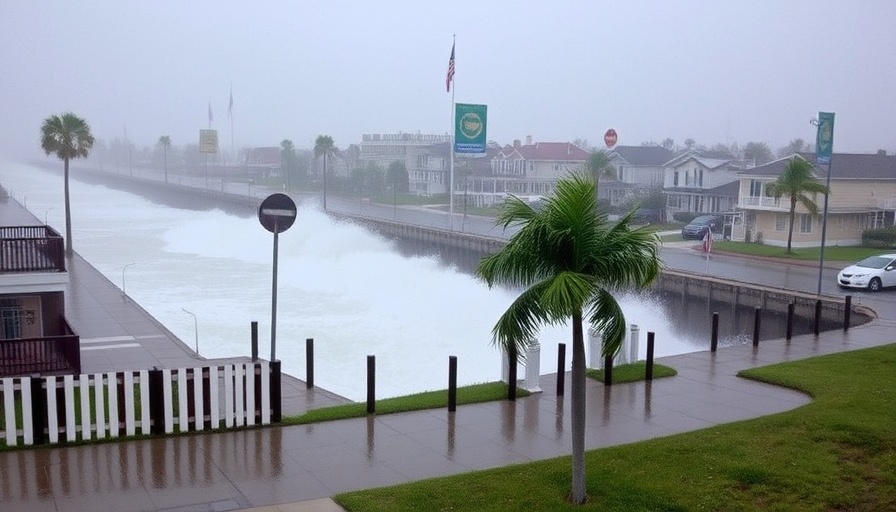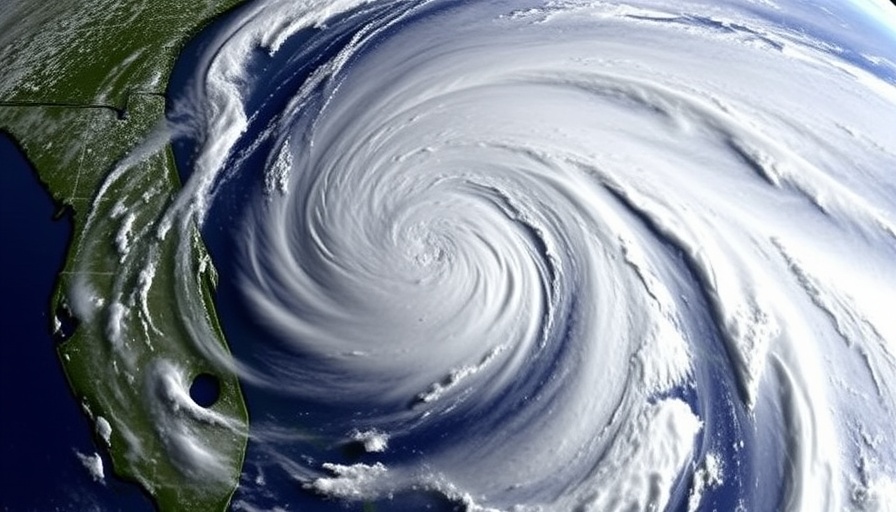
Hurricane Erin: The Threatening Reality of Rising Water
As Hurricane Erin wreaks havoc along the U.S. East Coast, it’s essential to understand the implications on coastal properties and communities. The storm's predicted storm surge of up to four feet and life-threatening waves between 15 to 20 feet put homeowners, sellers, and property investors at risk. With warnings expanding for flooding and beach erosion, many residents are left contemplating their next move as they brace for a storm that has rapidly intensified over recent days.
The Impact on Coastal Property Values
With hurricanes like Erin becoming more frequent and severe due to climate change, the property market is likely to see a shift. Potential buyers might hesitate to invest in homes near the coast, particularly in areas projected to be significantly affected by rising sea levels and extreme weather events. The National Weather Service's declaration of flood watches in New York, New Jersey, and Delaware serves as a cautionary signal. Homebuyers should consider how climate change might affect their investments long-term.
Preparing for Storms: What Homeowners Need to Know
Investors and homeowners in hurricane-prone areas face the challenge of ensuring their properties are resilient to extreme weather. Simple strategies include elevating homes, using flood-resistant materials, and creating a disaster plan. With storms like Hurricane Erin growing in intensity, investing in protective measures can safeguard not only property but also cherished memories. Moreover, local authorities are encouraging residents to evaluate their insurance policies to ensure comprehensive coverage against natural disasters.
Evacuations vs. Risk: The Dilemma for Residents
Many coastal towns, especially those on the Outer Banks, have already issued mandatory evacuation orders. This raises critical questions: How do residents decide when to leave, and what factors influence their choices? While some might prioritize staying in their homes, facing turbulent seas and unstable weather, others may find themselves caught between staying for their investments or evacuating for safety. This delicate balance underscores the importance of local and state emergency preparedness plans.
Future Predictions: Where Are We Headed?
Hurricane Erin’s rapid intensity growth signals a larger trend concerning climate change and its impact on our coastlines. Experts warn that without significant action against greenhouse gas emissions, hurricanes are projected to become more powerful and unpredictable. This concerning trajectory calls for a reevaluation of community planning and property development towards sustainability and resilience. Future developments should not only focus on beauty but also integrate eco-friendly solutions to mitigate damage from extreme weather.
Actionable Insights for Property Investors
For the homebuyers and investors in Dumfries, understanding the changing climate landscape is crucial. When considering properties, focus on evaluating future risk assessments, potential environmental impact, and readiness for flooding events. Look not only for aesthetic appeal but also for homes equipped with green technology and sustainable materials that can weather the storm. Basing decisions on informed predictions allows for long-term security, not only in property investment but also in community welfare.
With the effects of climate change extending to coastal regions and influencing property dynamics, it’s vital to stay informed and proactive. Stay aware of local weather alerts, consult with real estate experts about environmentally sustainable housing options, and participate in community discussions regarding resilience measures.
As Hurricane Erin moves through the East Coast, the implications for homeowners and property investors are significant. It's a powerful reminder to remain vigilant and prepared for what, as scientists warn, could become a new normal in a changing climate.
 Add Row
Add Row  Add
Add 





Write A Comment